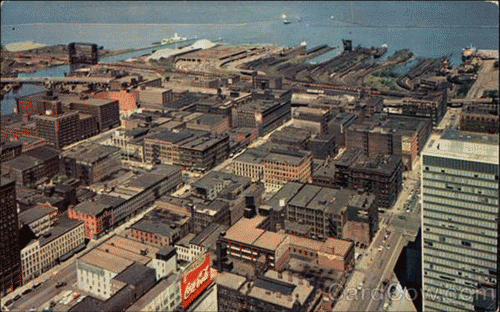I have previously been quite critical of Brad Pitt’s efforts in New Orleans. As I said then:
While the intentions were good, the results reek of arrogance and ego - an alien aesthetic foisted upon an optionless neighborhood by an experimenting design elite backed by fame and fortune.
So when I came across a recent pair of articles about New Orleans continued recovery struggles, I was very interested in seeing if I was overly harsh in my initial critique. Unfortunately, it seems I was not.
First up is Lydia Depillis, writing for New Republic:
Make It Right has managed to build about 90 homes, at a cost of nearly $45 million, in this largely barren moonscape—viewed from the Claiborne Avenue Bridge, which connects the ward to the center city, they spread out like a field of pastel-colored UFOs. But for a while now, Make It Right has been having trouble enticing people to buy their made-to-order homes. The neighborhood has turned into a retirement-community version of its former self; the ward’s other former residents are dead or settled elsewhere. Construction on the cutting-edge designs has run into more than its share of complications, like mold plaguing walls built with untested material, and averaged upwards of $400,000 per house. Although costs have come down, Make It Right is struggling to finance the rest of the 150 homes it promised, using revenue from other projects in Newark and Kansas City to supplement its dwindling pot of Hollywood cash. Now, in a wrenching deviation from its original mission, the non-profit has decided to open up to buyers who didn’t live in the neighborhood before Katrina.
But there’s a Catch–22: The neighborhood doesn’t have enough residents to attract many stores and services, and prospective buyers end up elsewhere because the neighborhood doesn’t have enough stores and services. So about 90 households, primarily elderly people like Guy, are living in futuristic homes that most Americans would covet, and yet there’s not a supermarket—or even a fast food restaurant—for miles.
It didn’t have to be this way, and it’s costing the city.
Contrast that with Doug MacCash’s story for The Times-Picayune:
You easily could drive by without noticing the quartet of small houses at Dauphine and Gallier streets in the Bywater neighborhood. They’re only 6 months old, but like chameleons that skitter through the subtropical foliage, they blend perfectly into their 19th-century surroundings. The clapboard sides, steep roofs and neoclassical door frames would be familiar to the Galliers themselves – the pre-Civil War father-and-son architects for whom the street is named.
That inconspicuousness is intentional. Andres Duany, who as a chief proponent of New Urbanism is perhaps the most distinguished – and sometimes disdained – urban planner of our time, designed the houses to be woven seamlessly into the small-scale, low-tech, historic architecture of New Orleans neighborhoods.
[…]
The 1,400-square-foot prototypes cost $186,000 each to build, not counting the land. That’s roughly $133 per square foot.
So on one hand we have a misguided effort by a movie star to rebuild a desolate part of the city that is disconnected from services and amenities. The houses boast many green accolades but suffer from a disjointed alien aesthetic and soaring costs. On the other hand we have a modest effort to integrate new housing into an existing functioning neighborhood with compatible architecture that is based on the rich character and tradition of the region. I’m sticking with my original analysis - I much prefer the humble neighborhood friendly houses from Duany to the alien techno-green prisons from Brad Pitt.
 May 27, 2013 |
May 27, 2013 |  ∞
∞ 

